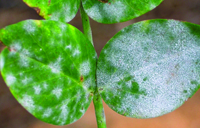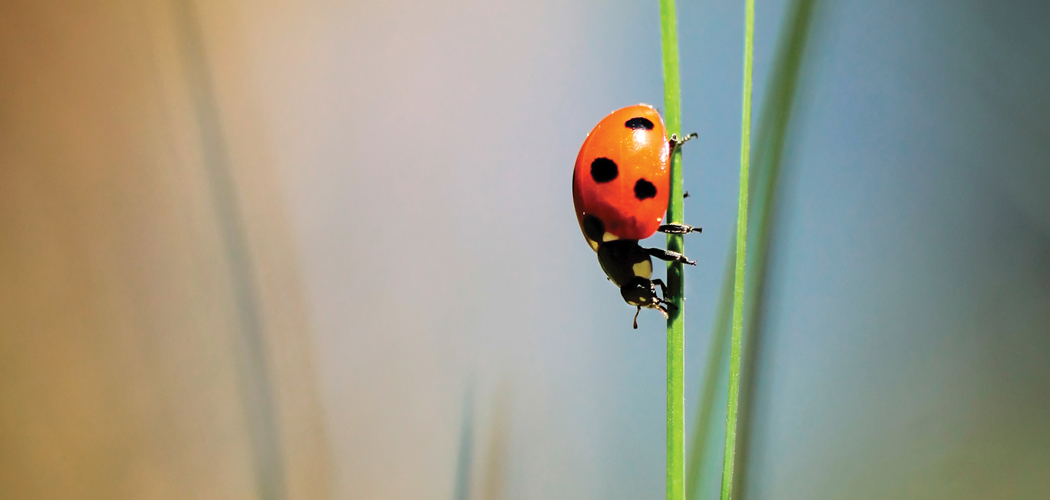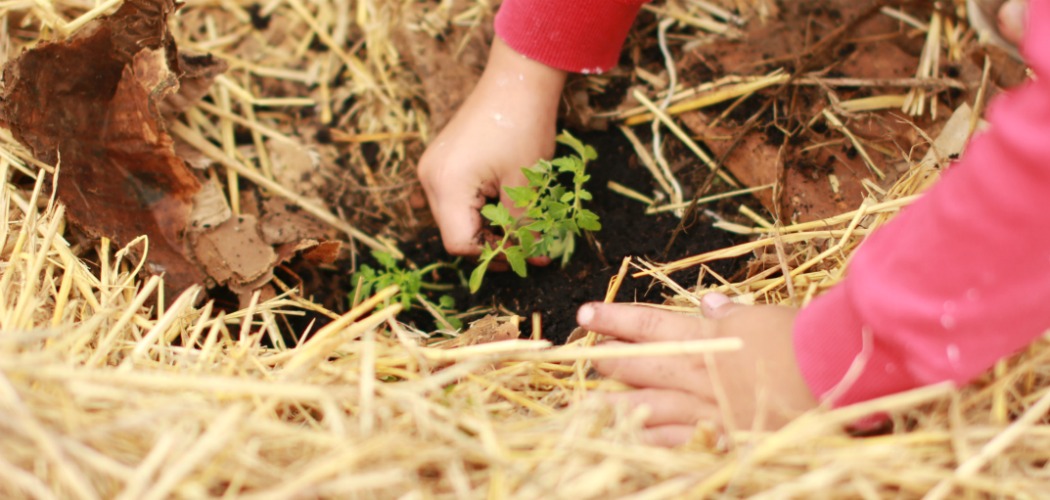[title subtitle=”words: Tiffany Selvey”][/title]
In common garden terms, we refer to dealing with garden pests as “pest control.” Let’s get this out of the way up front – there is no such thing as pest control. Trying to control pests is much like trying to control other elements of nature, such as rain and heat. We can be proactive and manage our response, but we cannot 100% control nature.
In spite of the doom and gloom those words might imply, there is good news. Understanding that you can’t control much of what you cannot see allows you to be partners with your garden and with nature. When we stop trying to control, the fear of loss, and the frustration that goes along with it, is gone. Will you lose some crops? Yes. Count on it. Will you lose everything? Barring a biblical-type plague of locusts, probably not.
Throughout history, mankind managed to garden without chemicals, and so can we, by attracting and making use of beneficial insects.
{ Beneficial Insects }
I’m a big fan of beneficial insects, not only because they’re fun to watch, but because I’m a busy lady and they do a lot of my work for me. Using beneficial insects in the garden is referred to as “biological control.” Here are a few of my favorites:
Ladybugs: Last year aphids attacked my gourds. Being a pesticide-free gardener, instead of killing them off, I let them devour the gourds, knowing ladybugs would arrive to feast on the aphids. A bit later in the season, I had an infestation of some kind of critter on my asparagus. Within a day of seeing the critters, tons of ladybug larvae moved in to do battle. It was the biggest, yet slowest battle ever. While those little larvae feasted on this mystery pest, they continued to develop into full grown ladybugs, so not only did they take care of my pest problem, I also got a front row seat to watch their daily growth and development. (If you think humans go through some awkward teenage years, you should see the in-between stages of ladybug development.) How do you suppose I had so many ladybugs to help out with the critters on my asparagus? I made sure there was a food source for them. In this case, the aphids that had earlier destroyed my gourds brought in loads of ladybugs that stayed to lay eggs. One failed crop was definitely worth it.
 Lacewings: Lacewings are another group of beneficial insect that love to feast on aphids. Lacewing larvae do most of the work, eating small insects like aphids and mites, as well as the eggs of many other pests, such as caterpillars and beetles.
Lacewings: Lacewings are another group of beneficial insect that love to feast on aphids. Lacewing larvae do most of the work, eating small insects like aphids and mites, as well as the eggs of many other pests, such as caterpillars and beetles.
Parasitic Wasps: Due to their sting, we typically want to avoid anything with “wasp” in the name. However, parasitic wasps are beneficial insects that don’t sting. These insects feed on the larvae and eggs of pests, like beetles and flies. Perhaps the most interesting aspect of the parasitic wasp is that it lays its eggs inside the flesh of damaging caterpillars. The eggs hatch and the larvae eat their way out of the pest, killing it. This is particularly useful for tomato hornworms, which can do a lot of damage in a very short time.
{ Laws of Attraction }
Blooming plants are the key to attracting beneficial insects. You must provide a source of nectar, as well as unwanted pests to keep beneficial insects happy. Plants with small blooms are preferred by beneficial insects and pollinators. Yarrow, cilantro (coriander), dill, fennel and lemon balm attract beneficials. For herbs that you will harvest, be sure to allow some of the plants to bloom. Plan on planting some for you, and some for them.
 Some beneficial insects can be purchased and released into the garden. Ladybugs, for example, can be bought and shipped, then released to feed on existing pest populations in the garden, saving time and damage.
Some beneficial insects can be purchased and released into the garden. Ladybugs, for example, can be bought and shipped, then released to feed on existing pest populations in the garden, saving time and damage.
We are also becoming more aware of declining bee populations. While bees do not control unwanted pests, they are crucial to your garden. This is the primary reason I don’t use pesticides; getting rid of a few pests isn’t worth killing my most valuable pollinators. Pesticides are indiscriminate; if it will kill a pest, it will kill a beneficial insect. Bees fertilize our blooming plants by moving pollen from the male blooms and depositing it on the female blooms as the bee moves between flowers to collect nectar.
{ There’s a Fungus Among Us }
Mildew isn’t officially a pest, but I want to cover it, because it’s pretty darn pesky. The most common form of fungi in the garden is powdery mildew. It looks just like the  name implies – like a thin powder on the leaves of plants. Most commonly, it appears when days and nights are warm and humid, and very often on the tops of larger leaves like those on squash and gourds, but can show up on just about any crop. There’s no need to buy a special fungicide for this minor problem. A simple mixture of 40% milk and 60% water in a spray bottle works if used at the first sign of mildew. Occasionally black mold will appear on malformed fruits. Remove those fruits and send them to compost (unless you also suspect a pest issue) to prevent rot from spreading to the rest of the plant.
name implies – like a thin powder on the leaves of plants. Most commonly, it appears when days and nights are warm and humid, and very often on the tops of larger leaves like those on squash and gourds, but can show up on just about any crop. There’s no need to buy a special fungicide for this minor problem. A simple mixture of 40% milk and 60% water in a spray bottle works if used at the first sign of mildew. Occasionally black mold will appear on malformed fruits. Remove those fruits and send them to compost (unless you also suspect a pest issue) to prevent rot from spreading to the rest of the plant.
{ Cultural Controls }
Dealing with pests culturally means making changes to the environment where the pest resides in order to prevent damage to your plants. Here are a few examples:
Aluminum Foil: Squash vine borers are a type of moth. The moth bores a hole in the stem of the squash plant, laying its eggs inside. The larvae eat their way out, destroying the structure of the stem, killing the plant. Wrapping the stem of squash plants with aluminum foil makes that area of the plant inaccessible and the moth will find another place to lay her eggs. Planting borer resistant varieties is also a good cultural control. I’ve had good luck with Benning’s Green Tint summer squash and Tatume squash.
Drinking Straws: Cutworms can be a big problem when small plants are first transplanted outdoors. They eat all the way around the stem of young plants, including tomatoes, corn and peppers, thus cutting and killing the plant. A good cultural control is keeping the stems protected for the first few weeks until the plant is too large to be susceptible. A drinking straw, slit lengthwise and placed around the tender seedling stem will prevent cutworms from snacking.
Beer: For slugs, death by beer is probably the easiest cultural control method. Place a shallow dish in the ground – the top even with the soil surface. Fill it with beer and the slugs will go in for a drink and drown.
 By changing the way we think, moving from “pest control” to “pest management”, we become partners, working in cooperation with nature. Chemical-free practices not only create a healthier garden, but a healthier environment, and ultimately, a healthier you!
By changing the way we think, moving from “pest control” to “pest management”, we become partners, working in cooperation with nature. Chemical-free practices not only create a healthier garden, but a healthier environment, and ultimately, a healthier you!
[separator type=”thin”]
Master Gardener and writer, Tiffany Selvey, resides with her family and pets on a half-acre city plot in Northwest Arkansas. She grows unconventional items, her family’s daily food, and enough to preserve. Tiffany gardens outside the box with reckless abandon. Find her on Facebook at SongbirdGardensAR or at Songbird-gardens.com.




